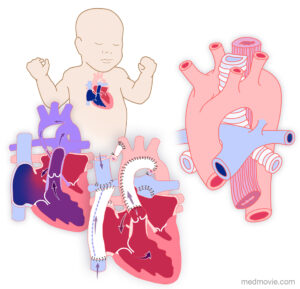Pediatric cardiology
Pediatric cardiology is a branch of medicine that specializes in diagnosing and treating heart conditions in children, including infants, toddlers, children, and adolescents. It focuses on the diagnosis, management, and treatment of congenital heart defects (heart defects present at birth) and acquired heart diseases that develop later in childhood.

Pediatric cardiologists are medical doctors who have undergone additional training to become experts in the field. They work closely with other healthcare professionals, such as pediatricians, pediatric cardiac surgeons, and pediatric intensivists, to provide comprehensive care for children with heart problems.
Here are some key aspects of pediatric cardiology:
Diagnosis: Pediatric cardiologists use various tools and techniques to diagnose heart conditions in children. This includes physical examinations, listening to the heart sounds, interpreting electrocardiograms (ECGs), echocardiography (ultrasound of the heart), cardiac catheterization, and advanced imaging techniques like MRI and CT scans.
Congenital Heart Defects: Congenital heart defects are abnormalities in the heart’s structure that are present at birth. These defects can affect the heart’s walls, valves, or blood vessels, and they can range from mild to severe. Pediatric cardiologists work with other specialists to diagnose and develop treatment plans for these conditions.
Acquired Heart Diseases: In addition to congenital heart defects, children can also develop heart diseases later in childhood. These can include conditions such as rheumatic heart disease, cardiomyopathies, arrhythmias, and Kawasaki disease. Pediatric cardiologists evaluate and manage these conditions through medical interventions, medications, and, in some cases, surgical procedures.
Cardiac Catheterization: Cardiac catheterization is a diagnostic and treatment procedure used in pediatric cardiology. It involves inserting a thin, flexible tube (catheter) into a blood vessel and threading it up to the heart. This allows the cardiologist to assess the heart’s structures, measure pressures, collect blood samples, and perform certain interventions, such as closing abnormal blood vessels or dilating narrowed ones.
Interventional Procedures: Pediatric cardiologists can perform certain minimally invasive procedures to treat heart conditions. Examples include closing septal defects (holes in the heart walls) using devices placed through catheters, dilating narrowed heart valves or blood vessels, and stenting.
Long-term Care: Pediatric cardiologists provide long-term care for children with heart conditions. They monitor their growth and development, assess their heart function, manage medications, and make recommendations for lifestyle modifications. They also educate patients and their families about the condition, potential complications, and ways to promote heart health.
Pediatric cardiology plays a crucial role in the early detection, diagnosis, and management of heart conditions in children, ensuring the best possible outcomes for their heart health and overall well-being.
